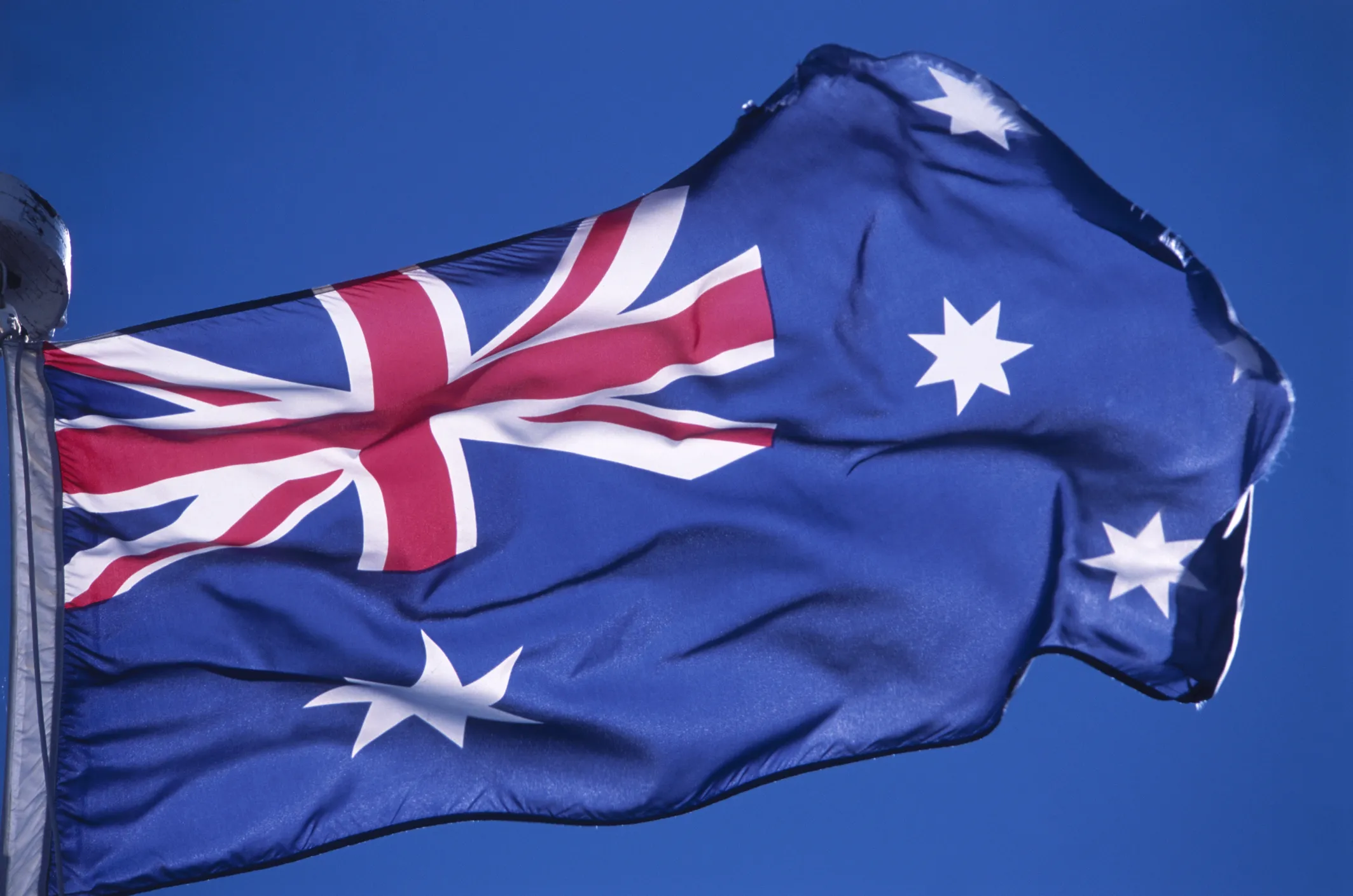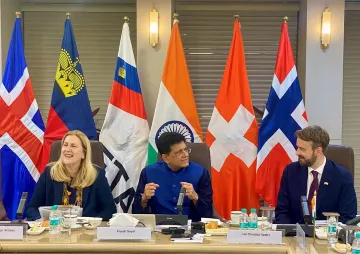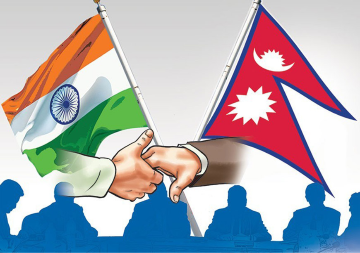
There is very little mature international press coverage of the geo-strategic contest that is playing out in the Pacific. This is sometimes even true in Australia, where media attention can be fitful despite the region’s proximity. It must seem remote indeed for those further afield who seek to take a strategic interest. Much of the public commentary makes the region sound like a vacant expanse where China is locked in mortal combat with the West, led by Australia as its chief representative in the region. The competition is real, and the stakes are high, but this common narrative tends to ignore the people of the region themselves—the challenges they face, their priorities, and their aspirations.
People live there, and they have agency
The world’s largest ocean is home to a range of proud, diverse, culturally rich communities. Some inhabit the rugged terrain of the region’s largest country, Papua New Guinea (PNG). Others live on archipelagos, which occupy stupendously large maritime zones. Most are plentiful in fishery stocks and minerals potential, including the new minerals needed for the future global economy. But many also face serious development challenges, with health and education services struggling to keep up with the needs of rapidly growing populations.
The people of the region hope for a better, sustainable future, and have their own ideas about how to get there. The Pacific Island Forum’s 2050 Strategy for the Blue Pacific Continent sets out a pathway to a collective vision of a secure, resilient, and prosperous region. The people of the Pacific are united in their concern about climate change—for them it is truly an existential threat, and they know that their experience will presage what is to come for the rest of the planet. Of course, this gives the rest of us a fundamental interest in what’s happening in the Pacific too.
China’s rise: What’s at stake in the Pacific?
The global community also has an interest in what regional events tell us about China’s desire for global projection and the consequent changes in the international strategic balance. Chinese engagement with each of the region’s standing military forces—in Fiji, PNG, Tonga and Vanuatu—has undoubtedly increased. Assistance from the People’s Liberation Army (PLA) ranges from military infrastructure and logistical support to personnel training and the gifting of vehicles and vessels. And there is no reason to believe that the assertive maritime strategies that have underpinned China’s approach in the Indian Ocean and South China Sea are not also guiding Beijing’s approach in the Pacific. A Chinese navy capable of projecting serious power across the world would also need to be supported by bases there.
For the inhabitants of the Pacific themselves, China’s growing strategic interest in the region carries a range of risks. Pacific voices have joined others in expressing concern about the lack of transparency around Chinese financial support for politicians, and the risks to their sovereignty flowing from China’s attempted “debt diplomacy”. Meanwhile, local communities have called out the tendency of Chinese state-owned enterprises to pursue project deals with national leaders while ignoring their own interests and concerns. Chinese representatives sometimes struggle to understand that centralised control is not the Pacific way.
Civil society representatives also worry that Beijing’s approach to media freedoms and the public expression of political aspiration is influencing some regional governments in the wrong direction. In Vanuatu, for example, China has taken an aggressive approach in trying to control the local media narrative about its own role in the country, and local authorities have been accused of going along with it. We have also seen disturbing signs of how governments respond to political dissent in Solomons and Kiribati, where China’s influence is also significant.
What’s the score?
There is a popular view that China is outspending and therefore out-influencing the West right across the Pacific. This is, at best, too crude a picture.
To understand the true nature of the contest, it helps to reflect on what really has happened since the new ‘great game’ in the region first came to broad international attention. Specialists have been watching strategic competition unfold for many years, but public awareness first really spiked in 2018, in the lead-up to President Xi Jinping’s visit to Port Moresby, PNG’s national capital, for the APEC leaders’ summit. It was the first visit to the region by a Chinese paramount leader. ‘China aid’ signs were suddenly everywhere in Port Moresby amidst the hasty construction of conference facilities and the resurfacing of roads which the great visitor would drive along. There was a visible Chinese naval presence during Xi’s state visit, and he made promises of generous financial support to assist the host country in its then already straitened fiscal circumstances.
The international media ran hard with the story – China was on the march in the Pacific.
In fact, the promised loans for PNG did not eventuate, and expectations of greater Chinese development assistance across the region have not been realised. According to the Lowy Institute’s Pacific Aid Map, updated in early November this year, 2020 saw China’s regional contribution, never significant compared to ‘traditional’ development partners such as Australia, fall to just US $187 million that year—its lowest point since 2008. And this in a year when overall international development financing for the region surged to reach a record US $4.2 billion in response to the impact of the pandemic.
Even Chinese concessional finance for the region remains much lower than many believe. Most of the Pacific’s external debt is with multilateral agencies such as the Asian Development Bank (ADB) and the World Bank. These two institutions together owned more than half of the region’s external debt in 2020. China’s development finance to the region peaked in 2019, with little significant new activity in recent years. This trajectory could be reversed if certain major Chinese State Owned Enterprise (SOE) investments proceed, like the major Ramu II hydroelectric scheme in PNG.
As others have noted, there are several possible explanations for this recent decline in Chinese financial assistance to the region. Pacific leaders may have become more wary of Chinese loan offers. It may also reflect a global decline in Chinese loans—the risks involved, and China’s own domestic debt problems, appear to have prompted tighter central control of SOE lending. But Chinese loans have already served a useful function from Beijing’s perspective: Helping get Chinese SOEs into the region. This is particularly true in PNG, where the number of state-owned companies operating in the country almost doubled in the 12-month period following Xi’s visit in 2018—across construction, energy, resources, retail, trading, telecommunications, and finance—with the result that Chinese SOEs now hold contracts for over 80 percent of infrastructure projects in PNG.
Size doesn’t matter
To evaluate China’s approach to the Pacific based only on its total regional spend in aid and soft loans is to encourage a wrong-headed belief that, in order to secure primary influence and partnership with the region, democratic nations just need to up the financial ante—to allocate greater development and financial support to the Pacific.
To evaluate China’s approach to the Pacific based only on its total regional spend in aid and soft loans is to encourage a wrong-headed belief that to secure primary influence and partnership with the region, democratic nations just need to up the financial ante
If that’s all there is in the democratic countries’ armoury, then the battle is already lost. Aid programs can be useful tools—health and humanitarian assistance has saved many lives over the decades, and education and governance programmes are helping at the margins. But Pacific leaders know that foreign aid will never transform their economies; only national leadership and sustainable economic growth will achieve that. That’s partly why they often don’t value aid in the way that donors hope and expect. (The other reason is that politicians see limited political upside for themselves in development delivered by foreigners.) By the same token, while aid can be a useful symbol of solidarity, it does not buy influence. That comes only with enduring, deep relationships, which rests, in turn, on respect.
In any case, Beijing has never shown any ambition to take on the kinds of responsibilities that traditional partners like Australia and New Zealand have accepted in delivering major regional support, which involves capacity development, health, education, governance reform and so on. Despite all the talk about the potential for Chinese “Belt and Road Initiative” (BRI) projects in the region, China won’t try to keep up with the pace being set by the Australian Infrastructure Finance Facility for the Pacific (AIFFP), which received a significant funding increase in the last Australian budget. China seems to calculate that it doesn’t need to compete at this level. Its approach is more opportunistic than that, and its focus is narrower.
It’s important to look beneath the broad regional canvas and consider where and how China’s financial support is concentrated. In recent times, new Chinese development assistance has been focused on specific countries, notably Kiribati and Solomon Islands — the two most recent Pacific Island countries to switch their diplomatic ties from Taiwan to Beijing. And despite the apparently benign overall debt picture across the region, a small handful of fragile countries—Tonga, Samoa and Vanuatu—are, in fact, heavily indebted to China.
There remains room for genuine concern that narrowly targeted Chinese debt diplomacy might, at some stage, see a repeat in the Pacific of the situation in Sri Lanka, where Chinese interests gained a majority stake in Hambantota port after the country ran into debt-related difficulties.
The saga of Solomon Islands
The recent experience in Solomon Islands has underlined that if China’s objective is really to establish a military base in the region, it does not need to play a big regional game. Until last year, there was a sense that Australia’s position in Solomon Islands was unassailable – it had led a highly successful regional assistance mission to stabilise the country amid conflict in the early 2000s and was the first to be called upon when violence returned in early 2021. As in other parts of the region, the Australian aid program dwarfs all others in Vanuatu.
So, it came as a shock in early 2022 when it was revealed in the press that the country’s prime minister, Manasseh Sogavare, was secretly negotiating the region’s first known bilateral security deal with China. International strategists joined local opposition figures in expressing serious concern that the agreement would allow China to send military and police personnel to Solomons, and potentially establish naval bases there. But Sogavare was not to be dissuaded, and the agreement was duly signed. This was a serious setback for Australia and its democratic allies. It led to accusations, amid an Australian election campaign, that the then Government of Scott Morrison had “dropped the ball” in the Pacific.
These events illustrated China’s approach to “elite capture” well. Beijing’s operating model is designed to appeal to those in power in partner countries. It allows politicians direct access to funding, providing an alternative to the approach of democratic countries, which require audit trails and full accounting for their taxpayers’ money. The Solomon Islands’ prime minister’s office has itself confirmed that it distributed Chinese government money to most, but not all, parliamentarians twice last year.
It's not just the Solomons. The Micronesian country of Kiribati was promised significant financial aid from China when it joined Solomon Islands in 2019 in switching recognition from Taipei to Beijing. China had managed to secure the support of the country’s President, Taneti Maamau, for the move, just as it won the backing of Prime Minister Sogavare. News emerged in 2021 that China was supporting the Kiribati government with a feasibility study for an airfield upgrade on Kanton atoll, at the strategic mid-point between East Asia and America. The local opposition expressed alarm, and the Kiribati government insisted that this project aimed only to boost transport links and tourism.
It is possible that the authorities in Solomons and Kiribati genuinely believe that Beijing’ intentions are benign.
Response underway
Following on from the March 2022 election, the new Labour government in Canberra has engaged intensively with the countries of the region to shore up Australia’s regional standing. This has involved an exhaustive pattern of high-level visits and new aid announcements. Most recently, on 13 December Australian Foreign Minister Penny Wong signed a comprehensive security agreement with Vanuatu and indicated that Australia was looking to secure similar agreements with other regional countries. Australia’s political relationship with the Solomon Islands Government also appears to have improved, with greater warmth evident between the two countries’ leaders and assurances from Sogavare that he will not allow a Chinese naval base. Meanwhile, despite an unprecedented regional visit by Chinese foreign minister Wang Yi in May this year, China was forced to withdraw a proposed region-wide security-policing and economic deal in the Pacific after some island nations raised concerns about policing, cybersecurity, and surveillance proposals.
The new Australian leadership has abandoned the bellicose language of their predecessors while continuing to stand firm on principles such as free trade and human rights.
Australia’s own bilateral relationship with China has stabilised in parallel with all this. The new Australian leadership has abandoned the bellicose language of their predecessors while continuing to stand firm on principles such as free trade and human rights. The Chinese President and the Australian prime minister met in the margins of the G20 meeting in Bali this month—the first meeting at this level in six years – and it’s just been announced that Penny Wong will visit Beijing this week. This improving trend does not mean, of course, that the contest in the region is over. It certainly didn’t prevent the unedifying spectacle in early November of the Australian and Chinese governments holding rival ceremonies, within days of each other, to gift weapons to the Solomons authorities. But there is room for hope that the competition will be managed more carefully going forward.
Importantly, in engaging the Pacific, Australia’s new leaders have appeared more mindful that they are dealing with a region whose inhabitants have their own views, and their own agency. They have been more careful to project a respectful approach to regional partnerships, consistently emphasising that they want to “listen” to partners’ concerns. Ministers no longer describe the Pacific as “our back yard”. With its more forward-leaning domestic approach to climate change, the new government has also been better positioned to signal that it takes seriously the Pacific Island countries’ concerns about global warming. Australia took the opportunity of COP27 in Sharm-el-Sheikh to lobby to host a conference in the region of the UN Climate Change Convention parties. This is of important symbolic value, even if there remain pockets of scepticism in the region about Australia’s resolve to abandon fossil fuels.
Australia remains in a strong position despite all the recent public angst. It’s the breadth and depth of its partnerships with the Pacific that count, rather than the dollar value of its aid programme. It’s not just that Australia has consistently worked over the years to build human capacity and deliver humanitarian relief, supplementing this is Australia’s role as an education destination for the emerging Pacific middle class—and for some, as a location for property investment. This kind of comprehensive partnership is well outside Beijing’s traditional comfort zone.
But Australia cannot rest on its laurels, and must be attentive to the frictions that inevitably develop in its own relations with regional countries. Relationships are never easy when there is an economic imbalance between the parties. The contest is much tougher now than it ever was before, and Australia needs help from others if the powerful challenge from Beijing is to be managed successfully.
To read the second part of the series, click here.
The views expressed above belong to the author(s). ORF research and analyses now available on Telegram! Click here to access our curated content — blogs, longforms and interviews.




 PREV
PREV


